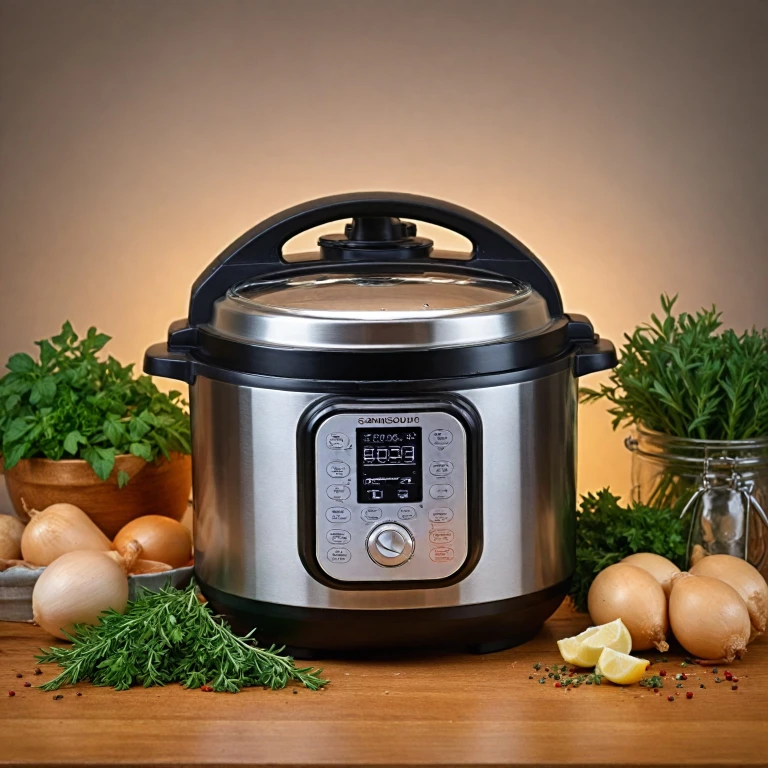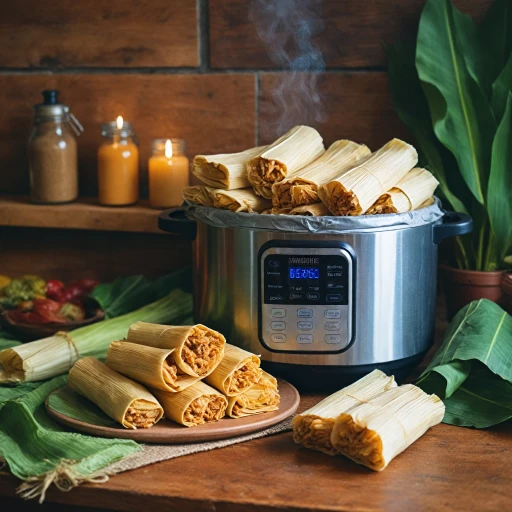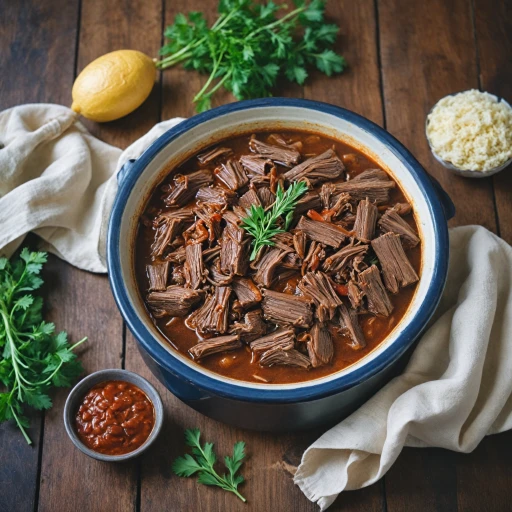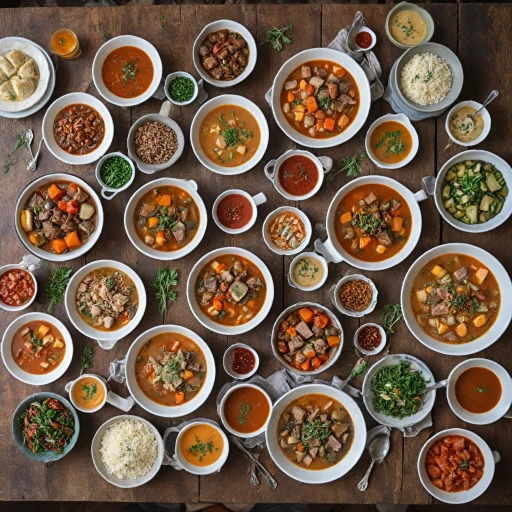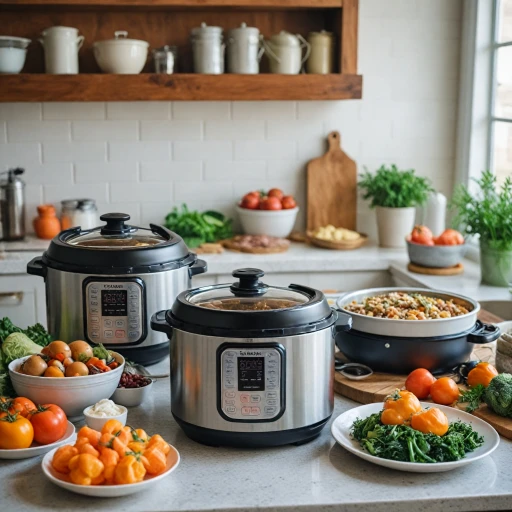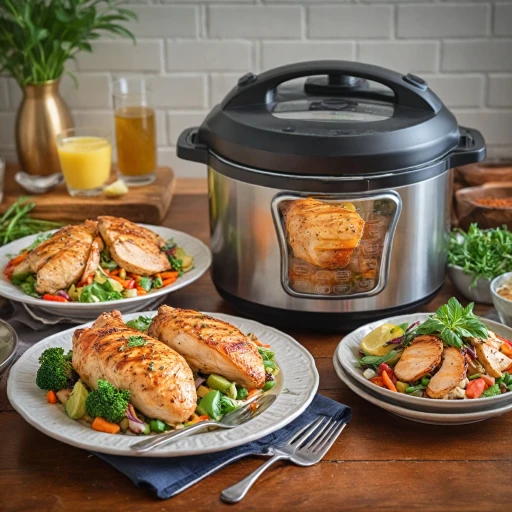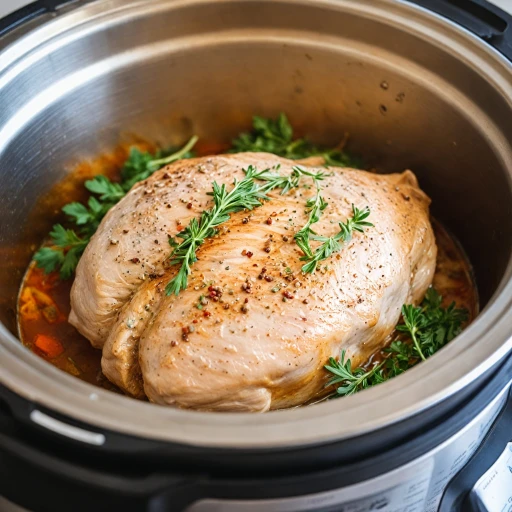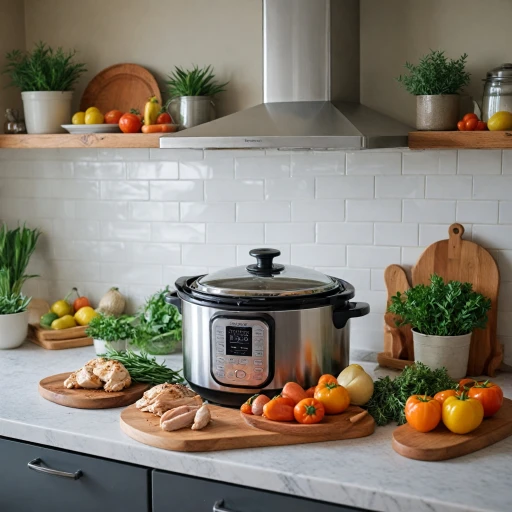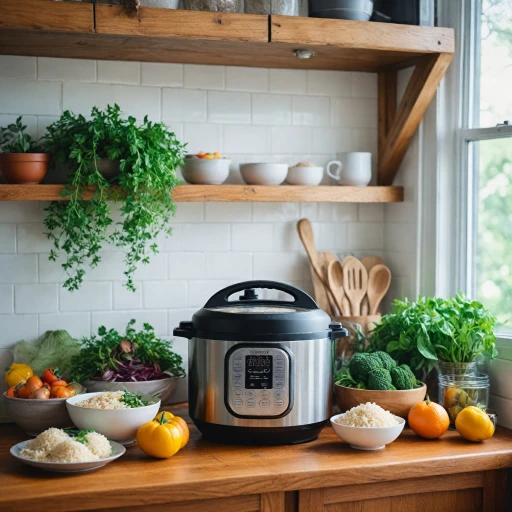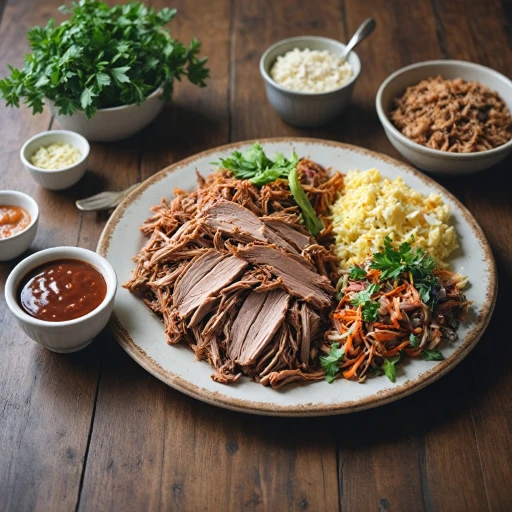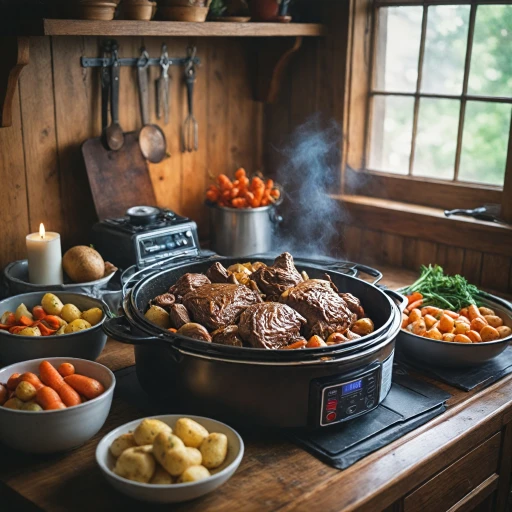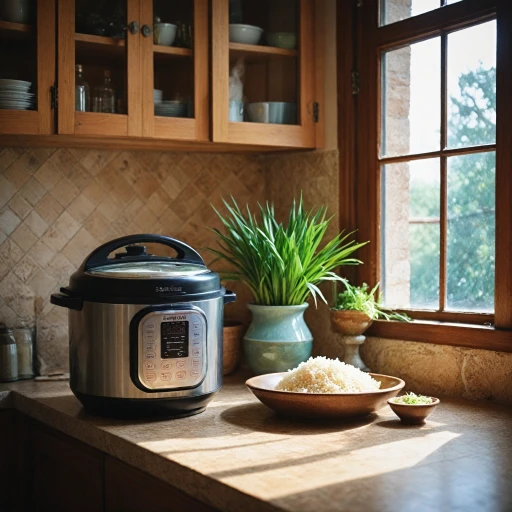
Understanding Your Electric Pressure Cooker
Essential Components of Your Kitchen Ally
Understanding your electric pressure cooker is crucial to achieving those perfectly cooked chicken breasts. These kitchen marvels, often referred to as Instant Pots, employ steam and high pressure to reduce cooking times significantly. This method is not only efficient but also helps in retaining flavors that might otherwise be lost in traditional cooking methods. When you are about to dive into cooking, it’s vital to get familiar with its primary components and settings:- Pressure Valve & Lid Seal: The pressure valve is a critical part of your cooker, allowing pressure to build or release. Ensuring your lid's seal is intact is key to preventing leaks that could affect cooking time.
- Cooking Modes and Controls: Most modern electric pressure cookers offer a variety of cooking modes and controls to cater to different recipes and meats. When cooking chicken, particularly when frozen, understanding these modes will help in setting the precise pressure and time.
- Timer & Display: This feature helps you monitor your cooking time accurately. Timely intervention impacts the juiciness of your chicken breasts significantly.
- Inner Pot: The material and size of the inner pot can also affect cooking performance, impacting how evenly the chicken cooks.
Why Timing Matters for Chicken Breast
The Importance of Timing for Juicy Results
A key factor in achieving perfectly cooked chicken breasts in an electric pressure cooker is understanding the significance of the cooking time. Chicken, whether fresh or frozen, requires the right balance of time under pressure to reach the ideal texture and flavor. Precision is crucial here because the difference between tender, juicy chicken and chewy, dry meat often comes down to just a few minutes. Why is timing so critical when it comes to cooking chicken breasts?- Protein Structure: Chicken is a lean meat, meaning it contains less fat than other meats. This attribute makes it more prone to drying out. Controlling the cook time ensures that the protein structure does not over-tighten, which can result in a tough texture.
- Uniform Cooking: Pressure cooking speeds up the traditional cooking process by applying high pressure and steam. However, because of this rapid cook time, fine-tuning is essential to ensure that the chicken breasts cook uniformly, whether starting from fresh or frozen.
- Retention of Juiciness: Accurately managed timing aids in locking in the natural juices of the chicken breasts, providing a succulent final product.
Step-by-Step Guide to Cooking Chicken Breast
The Path to Succulent Chicken in Your Instant Pot
To achieve perfectly cooked chicken breast every time, you need to follow a few critical steps. Here's a step-by-step guide to get you started:- Preparation Matters: Begin by properly seasoning your chicken breasts. This setting up can make your meal go from ordinary to exceptional. Consider using a mix of spices or a marinade for enhanced flavor. Remember, the way you prep your chicken breasts sets the tone for the final outcome.
- Add Liquid: Pour one cup of water or chicken broth into the bottom of your pressure cooker. This liquid is crucial as it creates the steam needed for pressure cooking and ensures that your chicken comes out juicy. Never pressure cook without at least a minimal amount of liquid.
- Setting Up Your Pressure Cooker: Place the seasoned chicken breasts on the trivet inside your electric pressure cooker. If you're using frozen chicken breasts, make sure they are arranged in a single layer to ensure even cooking.
- Configure Your Cooker: Set your cooker to "High Pressure." For fresh chicken breasts, typically cook for 6 to 8 minutes, while frozen chicken might require about 10 to 12 minutes. Keep in mind, these time frames are guidelines, and your results may vary depending on the thickness of the chicken as well.
- Allow for Natural Pressure Release: Once the cook time is over, let the cooker naturally release for 5 minutes before engaging the quick release. This method helps the juices to redistribute within the meat, leading to a tender and more succulent result.
- Check for Doneness: After releasing the pressure, use a meat thermometer to ensure the internal temperature of the chicken breast is at least 165°F. If it hasn’t reached the desired temperature, you might need to repeat a brief pressure cooking cycle.
Common Mistakes and How to Avoid Them
Avoiding Overcooking or Undercooking Chicken
When cooking chicken breasts in your pressure cooker, timing is crucial. One of the most common mistakes is not adjusting the cooking time based on whether you're using fresh or frozen chicken breasts. Utilizing the correct time ensures perfectly cooked, juicy meat every time.Not Enough Liquid
Another frequent issue is not adding adequate liquid. Your pressure cooker relies on steam created from liquid to build pressure, and insufficient water can lead to undercooked chicken or dry meat. Always ensure you're using enough chicken broth or water to maintain the right pressure and prevent dryness.Misjudging Pressure Release
Timing your pressure release is just as important as the cooking time itself. A quick release can lead to tough meat, while a natural release will keep your chicken breasts tender and moist. Remember to gauge the appropriate release method based on whether you plan to shred the chicken or serve whole.Ignoring Size Variations
Not all chicken breasts are created equal. Size matters when it comes to cooking time. Larger pieces require more minutes, while smaller breasts will cook faster. Adjust your timer accordingly to avoid undercooking or overcooking the meat.Using Inconsistent Pressure
Ensure your pressure cooker reaches high pressure before you start the timing. Rushing into the cooking phase can result in unevenly cooked chicken. Confirm your instant pot has reached the correct pressure for optimal results. Regularly check and practice using the cooker settings to become more attuned to its operation, leaving less room for error.Enhancing Flavor with Marinades and Seasonings
Elevating Flavor Profiles with Marinades and Seasonings
Enhancing the flavor of your chicken breasts in an electric pressure cooker involves more than just adjusting the cooking time. Marinades and seasonings can work wonders in transforming a simple chicken recipe into a mouth-watering dish. Here's how you can achieve that:- Marinades: A well-balanced marinade can infuse your chicken with a depth of flavor. Ingredients like olive oil, lemon juice, garlic, and herbs are effective. Allow the chicken to marinate for at least 30 minutes to up to 24 hours in the refrigerator for optimal flavor absorption.
- Dry Rubs: If time is of the essence, a dry rub can be a quick alternative. Mix spices like paprika, cumin, or pepper with salt and apply it to the chicken breasts before placing them in your pressure cooker.
- Cooking with Broth: Substitute water with chicken broth in the pressure cooker. This not only ensures the chicken remains moist but also enhances its taste.
- Adding Aromatics: Toss in ingredients like sliced onions, minced garlic, or bay leaves during the cooking process. These elements will steep alongside the chicken, enriching the overall aroma and flavor.
Troubleshooting and Adjustments
Addressing Common Issues in Pressure Cooking
Cooking chicken breasts in an electric pressure cooker can be a game-changer, but it’s not without its challenges. Here are some common issues you might encounter and how to troubleshoot them effectively.
Chicken Breast is Undercooked
If you find your chicken breast is undercooked, it might be due to insufficient cooking time. Ensure you are setting the cooker to high pressure and adjust the time based on the size and thickness of the chicken breasts. For frozen chicken, you’ll need to add a few extra minutes. Always check the internal temperature; it should reach at least 165°F (74°C) for safe consumption.
Chicken is Overcooked and Dry
Overcooking can lead to dry chicken breasts. To avoid this, ensure you are not exceeding the recommended cooking time. Quick release the pressure once the cooking cycle is complete to prevent further cooking. Using chicken broth instead of water can also help keep the meat moist.
Pressure Cooker Won’t Reach Pressure
This issue can occur if there isn’t enough liquid in the pot. Ensure you have at least one cup of water or chicken broth in the cooker. Check the sealing ring and valve to ensure they are properly positioned and clean.
Flavor is Bland
Enhancing flavor is crucial. Refer to the marinades and seasonings section to add depth to your chicken recipes. Marinating the chicken before cooking or adding spices directly into the pot can significantly enhance the taste.
Shredded Chicken Not Tender
If you’re aiming for shredded chicken and it’s not tender enough, try increasing the cooking time by a few minutes. Ensure you are using the natural release method for at least 10 minutes before performing a quick release to allow the meat to relax and become tender.
By understanding these common issues and how to address them, you’ll be well on your way to mastering the art of cooking chicken breasts in your electric pressure cooker.
